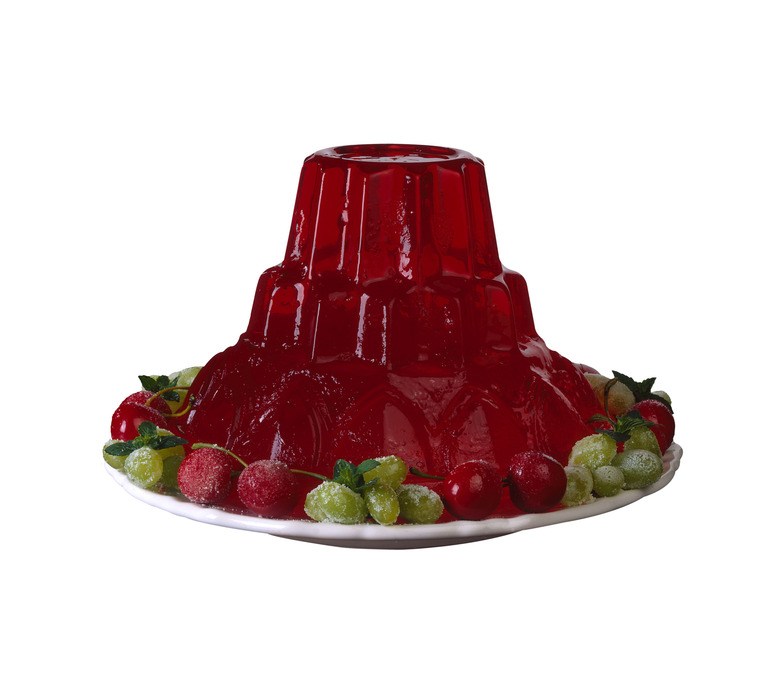How Does Gelatin Solidify?
Gelatin is a food ingredient made from animal by-products that contains no additives or preservatives. It is used in desserts such as Jello, pie filling and pudding, and also in marshmallows and in dips and sauces. The process gelatin goes through to change from liquid to solid is simple, resulting from the tangling of protein strands.
Raw Materials
Raw Materials
Gelatin is made from one of three sources of collagen: pork skin, beef skin or bone. These are materials that are by-products of the meat industry, and gelatin plants typically purchase these materials from abattoirs and meat packers. Each material is cut, washed and cleaned to remove as much non-collagen material as possible.
Solidifying
Solidifying
Collagen is a structural protein found in all animals, meaning it helps to give animals their shape. The collagen found in gelatin has been through a chemical reaction to prevent it from solidifying until you're ready to cook with it. When you dissolve gelatin mix in water, the tiny spaghetti-like proteins within it become entwined, or tangled. As they tangle, they form a mesh of pockets that hold water, sugar and other agents added for flavor. After refrigerating, the result is a jiggly solid.
Types
Types
Not all gelatin is the same. Each type is classified as either type A or type B. When the collagen proteins used are derived from pig's skin, it is classified as type A gelatin. When derived from beef, it is type B. Type A gelatin is produced using an acid process and type B is produced using an alkaline and acid process. Gelatin is also graded based on its strength, which is called its bloom. The higher the bloom rating, the higher the grade of gelatin.
Preparation Methods
Preparation Methods
A key step in the process of solidifying gelatin is dissolving it in a liquid. Gelatin is dissolved in one of three ways. The first method, called cold water swelling, adds the gelatin to cold water. The granules swell, absorbing up to 10 time their weight, and then the temperature is raised above 104 degrees in order to dissolve the swollen particles to form a solution. This solution then gels when cooled. The second method, called hot water dissolving, is used to make highly concentrated gelatin solutions such as Jello. The mix is dissolved in hot water and then cooled rapidly, solidifying it in a relatively short period of time. The third way gelatin is dissolved and solidified is through pasteurization, which is common in the manufacture of dairy-based products like puddings. Fine mesh gelatin is placed into the milk along with the other ingredients for the food product. The particles swell and are later dissolved during the heating stage of the pasteurization process.
Cite This Article
MLA
Miller, Renee. "How Does Gelatin Solidify?" sciencing.com, https://www.sciencing.com/gelatin-solidify-8718630/. 24 April 2017.
APA
Miller, Renee. (2017, April 24). How Does Gelatin Solidify?. sciencing.com. Retrieved from https://www.sciencing.com/gelatin-solidify-8718630/
Chicago
Miller, Renee. How Does Gelatin Solidify? last modified March 24, 2022. https://www.sciencing.com/gelatin-solidify-8718630/
